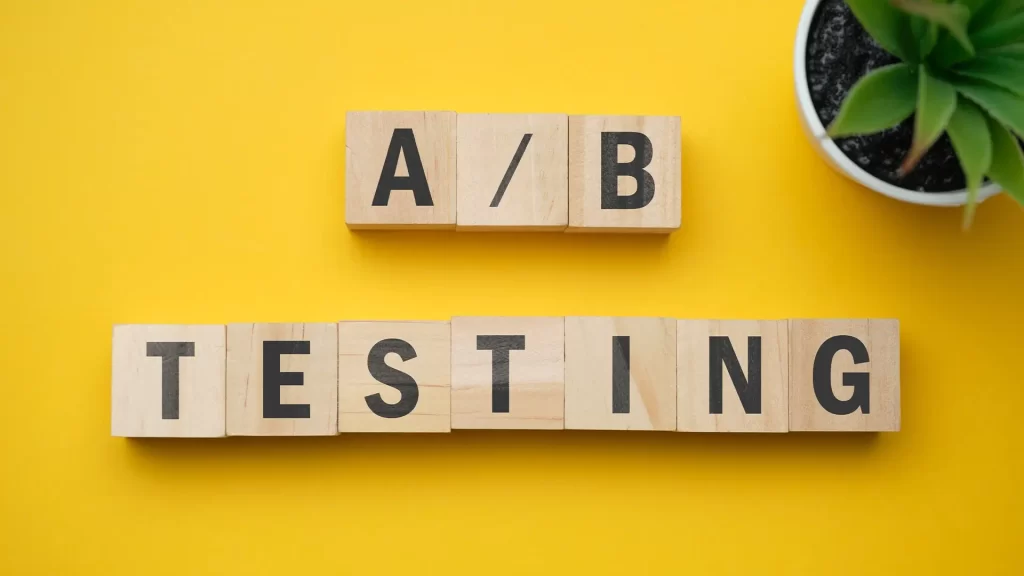A/B Testing: A Simple Approach to Improve Website Conversions
The world of digital marketing is constantly evolving, and businesses need to keep up to stay ahead of the competition. One of the most effective ways to do this is by utilizing a method called A/B testing. A/B testing is a simple, yet powerful tool that can drastically improve your website’s conversion rates. This comprehensive guide will walk you through everything you need to know about A/B testing and how it can benefit your business.
Understanding A/B Testing
A/B testing, also known as split testing, involves comparing two versions of a web page to see which one performs better. This is done by showing the two variants, let’s call them A and B, to similar visitors at the same time. The one that gives a better conversion rate, wins.
Why A/B Testing is Crucial for Your Business
Conversions are the lifeblood of any online business. Whether it’s getting a user to sign up for a newsletter, make a purchase, or fill out a contact form, each conversion contributes to your business’s growth and success. A/B testing allows you to fine-tune your website and its elements to ensure you’re getting the maximum conversions possible.
Even minor changes, such as a different headline or a new call-to-action button color, can lead to significant improvements in conversion rates. By consistently testing and optimizing, you can create a website that is fully optimized for conversion.
How to Conduct A/B Testing
A/B testing might seem complex at first, but it’s quite straightforward once you get the hang of it. Here’s a simple step-by-step guide to help you get started.
1. Identify Your Testing Goal
Your testing goal is the metric that you want to improve through A/B testing. It could be anything from reducing the bounce rate, increasing the click-through rate, improving the time spent on the website, or boosting the conversion rate. It’s important to identify this goal before starting the test, as it will guide your testing strategy and help you measure the test’s success.
2. Choose the Element to Test
Next, you need to decide what element of your webpage you want to test. This could be anything that affects your users’ behavior – from headline text and call-to-action buttons to images and product descriptions. Remember, the goal is to find out which variant helps you achieve your testing goal better.
3. Create the Variants
Now it’s time to create your variants. Variant A will be the original version, while Variant B will be the new version that includes the change you want to test. It’s crucial to only test one change at a time to ensure that the results are accurate.
4. Split Your Audience
For the A/B test to be effective, you need to split your audience equally and randomly between the two variants. This means that 50% of your audience should see Variant A, and the other 50% should see Variant B.
5. Conduct the Test
With everything set up, you can now conduct the A/B test. During the testing period, collect as much data as you can. The length of the test can vary depending on various factors, but it’s usually a good idea to run the test for at least a few weeks to ensure that you have enough data for a reliable result.
6. Analyze the Results
Once the testing period is over, it’s time to analyze the results. The variant that performs better in terms of your testing goal is the winner. However, don’t be quick to discard the losing variant. Analyze the data to understand why it didn’t perform as well – this information can be invaluable for future tests.
Getting Started with A/B Testing
A/B testing is a crucial part of digital marketing, and learning how to conduct these tests can significantly boost your business’s online performance. However, it’s a continuous and strategic process that requires time and effort.
That’s where we come in. At AZ Digital Marketing, we specialize in providing comprehensive digital marketing services to help businesses succeed online. Our team of experts is well-versed in A/B testing and can help you optimize your website for maximum conversions.
To learn more about our services, please visit our services page. If you have any questions or if you’re ready to start improving your website’s conversions, feel free to contact us for a free consultation.
A/B Testing Best Practices
A/B testing is as much an art as it is a science. Here are some best practices to help ensure your A/B testing efforts are successful:
- Test One Thing at a Time: As tempting as it may be to change multiple elements at once, it’s important to only test one change at a time. This ensures that you can accurately attribute any changes in performance to the variable you’ve modified.
- Test a Significant Change: Minor changes might not have a significant impact on your metrics. Don’t be afraid to test major changes to your page’s layout, headlines, or images. You might find that a bigger change leads to better results.
- Run the Test for a Sufficient Time: It’s important to run the test for a sufficient length of time to ensure you collect enough data. Ending the test too soon can lead to inaccurate results.
- Consider Your Traffic: The more traffic your website gets, the quicker you can collect significant data. If your site has lower traffic, consider running the test for a longer duration to gather enough data.
- Use a Reliable A/B Testing Tool: Use a reputable A/B testing tool that can accurately split traffic, track user behavior, and provide detailed reports. This will ensure that your test results are accurate and reliable.
Conclusion
A/B testing is a powerful technique that can help you understand your audience better, improve your website’s user experience, and ultimately, increase conversions. It’s a vital component of any successful digital marketing strategy.
At AZ Digital Marketing, we’re committed to helping our clients achieve their business goals through effective digital marketing strategies, including A/B testing. Visit our homepage to learn more about how we can help you take your online business to the next level.















